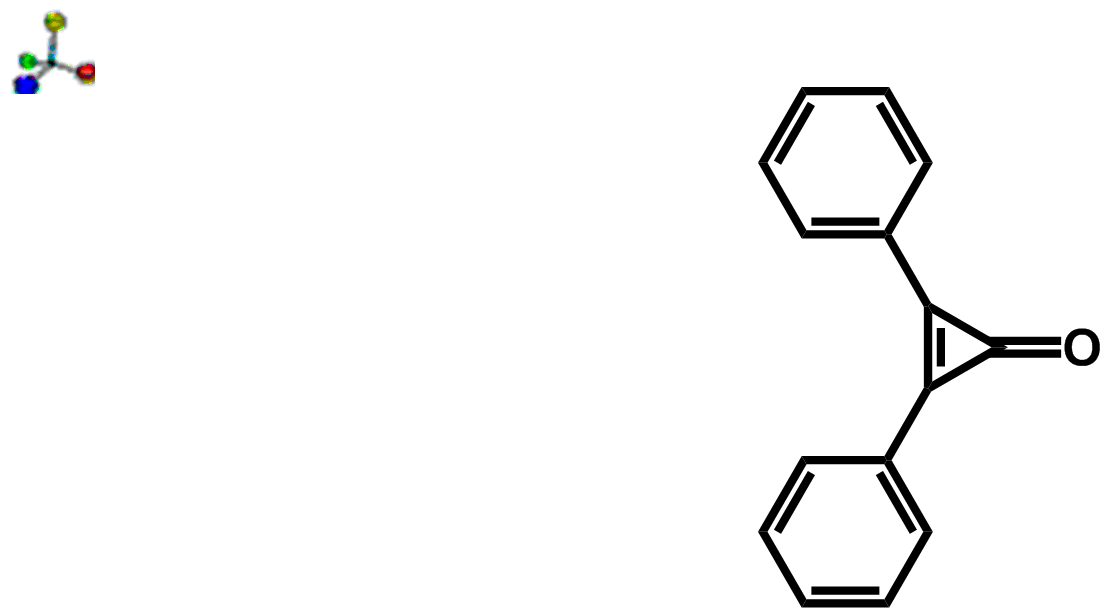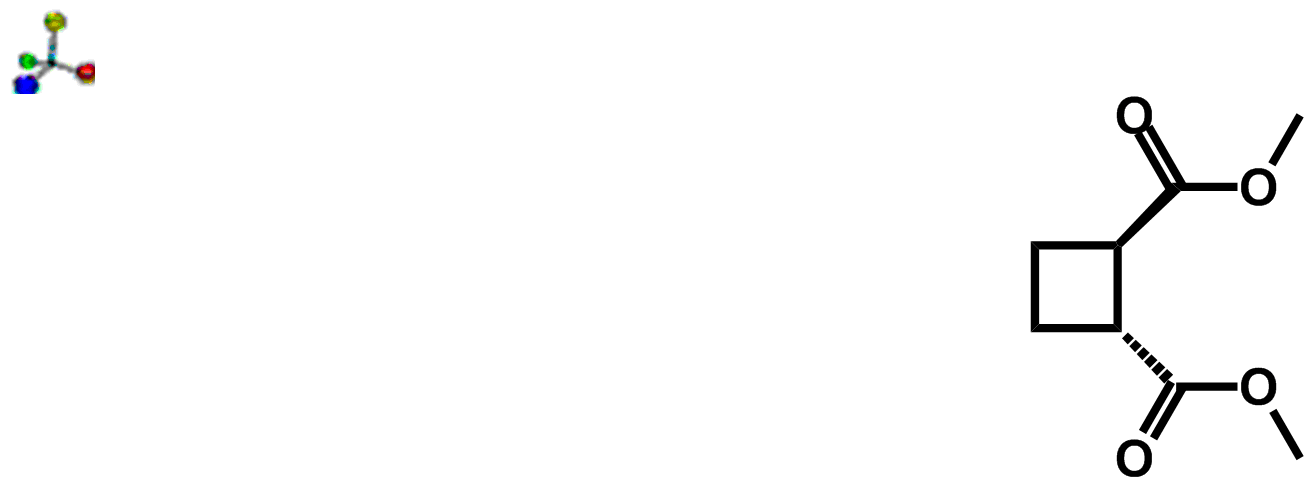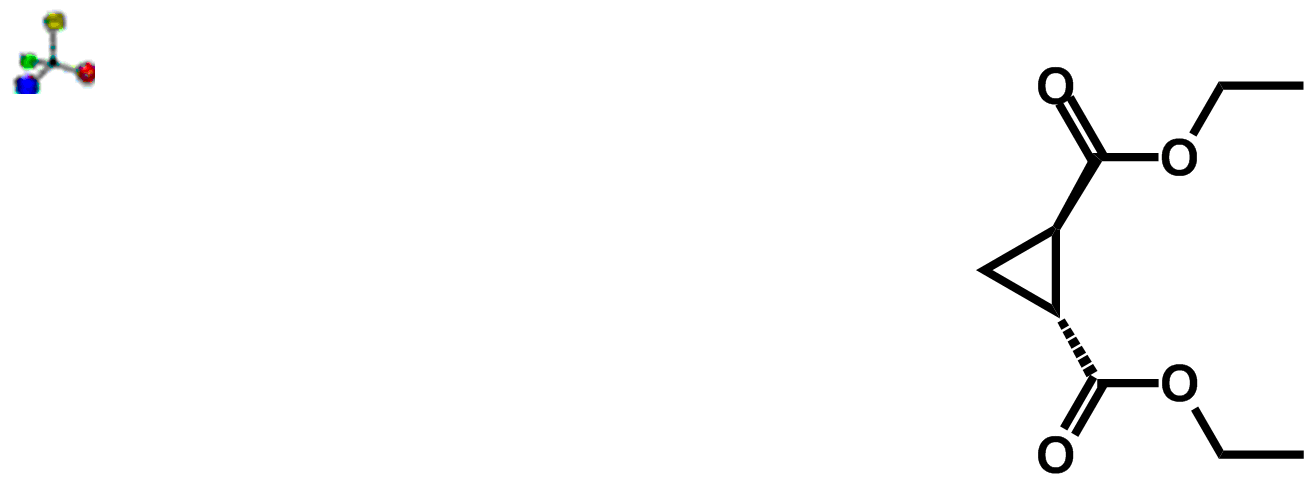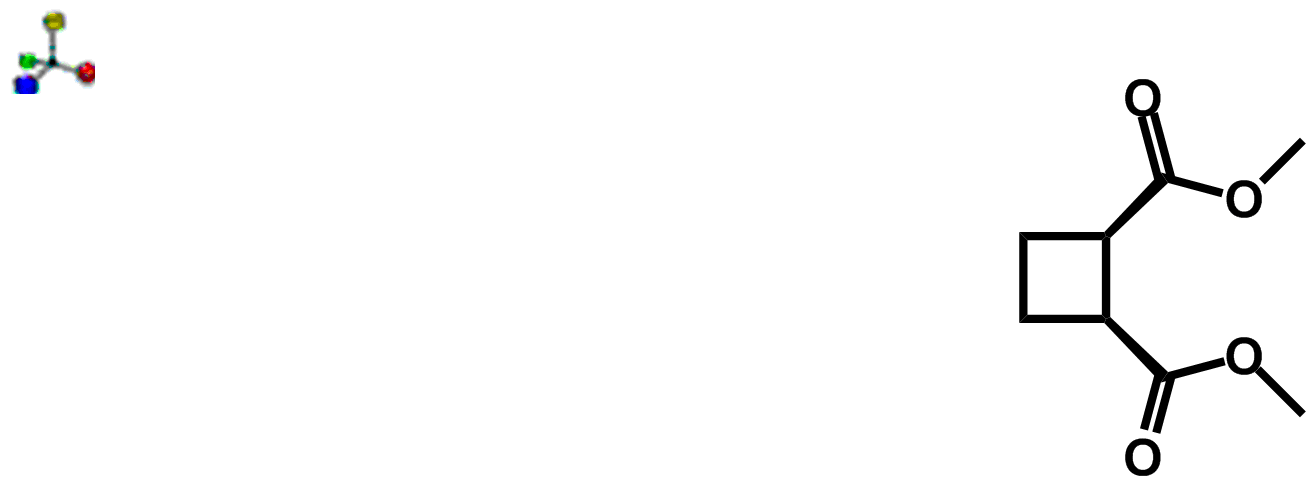you are here: SMALL RINGS
SMALL RINGS
Products protected by valid patents are not offered for sale in countries where the sale of such products constitutes a patent infringement and its liability is at buyer's risk.
Three- and four-membered rings are often very reactive due to their ring tension. The ring tension arises due to the spatial proximity of the atoms in the ring and means that these rings can break open or react more easily than larger rings.
Three- and four-membered rings can be stabilised by substituents. These substituents can reduce steric hindrance or introduce electronic effects that reduce the ring tension.
Three-membered rings (trigons):
Tripartite rings are particularly reactive and unstable due to the high ring tension created by the narrow angle between the bonds.
They are often referred to as "small rings" and are of particular interest in organic chemistry due to their unique chemical properties.
Examples of three-membered rings are cyclopropane and epoxides (oxiranes).
Four-membered rings (tetragons):
Four-membered rings are more stable compared to three-membered rings, but are still quite reactive due to ring strain.
They are also known as "small rings" and are used in various organic syntheses and reactions.
| # | art.-no. | title | Mol. formula | CAS | Struct. formula | Shop |
|---|---|---|---|---|---|---|
| 1. | ST00318/01 | cis-Cyclobutane-1,2-dicarbonitrile | C6H6N2 | 3211-19-6 |  |
|
| 2. | ST00318/02 | trans-Cyclobutane-1,2-dicarbonitrile | C6H6N2 | 3211-20-9 |  |
|
| 3. | ST00323 | Cyclobutane-1,1-dicarboxylic acid diethylester | C10H16O4 | 3779-29-1 |  |
|
| 4. | ST00525 | trans-1,2-Bis(aminomethyl)cyclobutane | C6H14N2 | 1731-23-3 |  |
|
| 5. | ST00535 | trans-Cyclobutane-1,2-dicarboxylic acid | C6H8O4 | 1124-13-6 |  |
|
| 6. | ST00537 | 1,2-Diphenylcyclopropen-3-one | C15H10O | 886-38-4 |  |
|
| 7. | ST00567 | 2-Cyclopropylpropane-2-ol | C6H12O | 930-39-2 |  |
|
| 8. | ST00576 | Cyclobutane-1,2-dicarboxylic anhydride | C6H6O3 | 4462-96-8 |  |
|
| 9. | ST00624 | cis-Cyclobutane-1,2-dicarboxylic acid | C6H8O4 | 1461-94-5 |  |
|
| 10. | ST00631 | trans-Dimethyl cyclobutane-1,2-dicarboxylate | C8H12O4 | 3396-20-1 |  |
|
| 11. | ST00710 | Cyclobutane carboxylic acid | C5H8O2 | 3721-95-7 |  |
|
| 12. | ST01331 | 3,4-Dihydroxy-3-cyclobuten-1,2-dion | C4H2O4 | 2892-51-5 |  |
|
| 13. | ST01397 | Dicyclopropyl-(4-methylphenyl)methanol | C14H18O | 71172-47-9 |  |
|
| 14. | ST01899 | Cyclobutane-1,1-dicarboxylic acid | C6H8O4 | 5445-51-2 |  |
|
| 15. | ST02181 | Cyclobutanone, stab. with 0.1% BHT | C4H6O | 1191-95-3 |  |
|
| 16. | ST02463 | 1-Aminocyclobutane-1-carboxylic acid hydrochloride | C5H10ClNO2 | 98071-16-0 |  |
|
| 17. | ST02690 | 1,1-Dicyclopropyl-ethanol | C8H14O | 18895-50-6 |  |
|
| 18. | ST02859 | trans-Diethyl cyclopropane-1,2-dicarboxylate | C9H14O4 | 3999-55-1 |  |
|
| 19. | ST03167 | Cyclobutanetetracarboxylic acid dianhydride | C8H4O6 | 4415-87-6 |  |
|
| 20. | ST03192 | Cyclobut-1-ene-1,2-dicarbonitrile | C6H4N2 | 3716-97-0 |  |
|
| 21. | ST03347 | cis-Dimethyl cyclobutane-1,2-dicarboxylate | C8H12O4 | 2607-03-6 |  |
|
| 22. | ST03844 | N-Methylcyclobutylamine | C5H11N | 34066-62-1 |  |
|
| 23. | ST03955 | spiro[3.3]heptane-2,6-dicarboxylic acid | C9H12O4 | 3057-91-8 |  |
|
| 24. | ST04067 | 3,3-Dimethyl-cyclobutanecarboxylic acid | C7H12O2 | 34970-18-8 |  |
|
| 25. | ST04069 | spiro[3.3]heptane-2,6-dicarboxylic acid monomethyl ester | C10H14O4 | 10481-25-1 |  |
|
| 26. | ST04268 | 3-Methylene-cyclobutanemethanamine | C6H11N | 16333-93-0 |  |
|
| 27. | ST04582 | 1-Hydroxy-1-cyclopropanecarboxylic acid | C4H6O3 | 17994-25-1 |  |
|
| 28. | ST06213 | 3-(4-chlorophenyl)cyclobutanone | C10H9ClO | 152714-07-3 |  |


